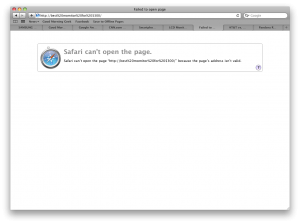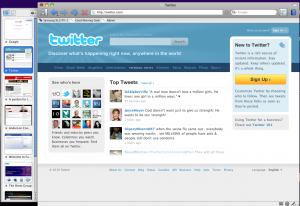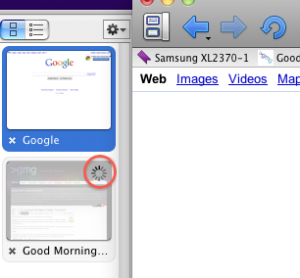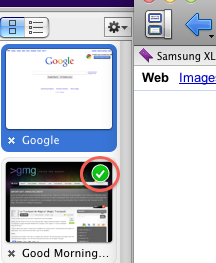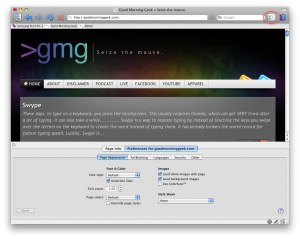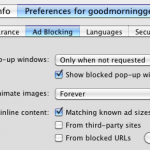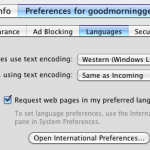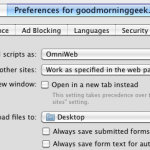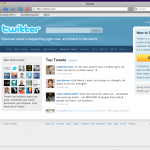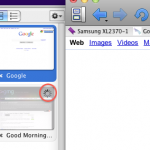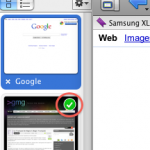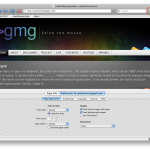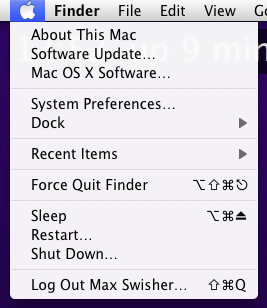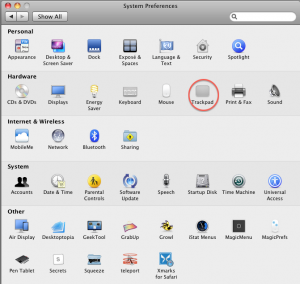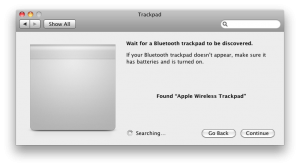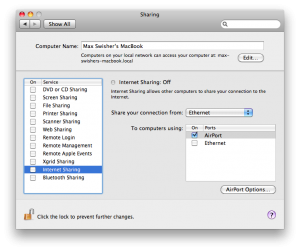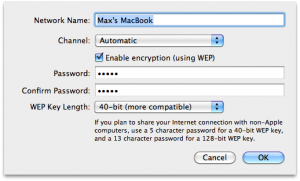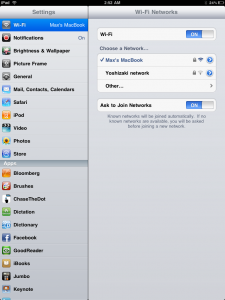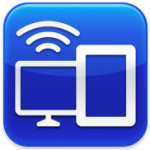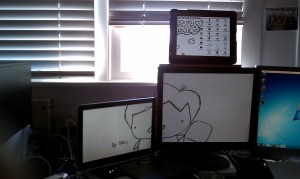
Sleek!
As you saw in this post, I wrote the following:
Time Machine is incredibly specific about the things it is happy about.
And I’d agree. But when you get the Time Capsule, because it is made for time machine, al of your problems disintegrate.
Wireless Networking
The Time Capsule is actually an AirPort Extreme and a 1/2TB hard drive built in. The Time Capsule has dual-band connecting 802.11g and 802.11n. On the back, you connect the Time Capsule to [ethernet] WAN and then using the AirPort Utility to configure all of your options. Then, plug in a wireless printer! To configure it, go to the Print & Fax pane in system Preferences. Click the + icon and select your printer from the list that appears. Tada! You can now wirelessly print to your USB printer! Then, in the WiFi menu in your Mac’s Menu bar select yur time capsule’s network name, enter a password and now you are connected to the internet through your Time Capsule!
Time Machine

The Time Machine Icon
Once you have configured your time capsule using the AirPort Utility you can now backup to it with Time Machine. Time Machine comes on very mac and is a functional backup tool. To start using time machine, open the time Machine preference pane in System Preferences and turn the big switch on. If a dialog doesn’t automatically appear click Select Disk…. In the dialog that appears select your Time Capsule (Usually Data on [your Time Capsule’s Name]) and click Use For Backup. It will then backup all of your data in what is called the initial backup. This one first bakup wil usually take about 3-7 hours depending on how much data you have (4-5 for 30GB in my experience). It will backup wirelessly, so feel free to move around the house while it backs up. After the initial backup is done, it will create a backup of new files every hour. DON’T WORRY! It doesn’t replace duplicate files, so the backup’s size shouldn’t change that much over the use of it unless of course you make some huge deletion or addition.
Uh-oh, you deleted that one special file[/folder]! It’s easy to get it back using using Time Capsule with Time Machine. On your mac, open a finder window where the file you deleted existed (before you deleted it, of course). Then, open the time machine APPLICAtION (NOT System Preference Pane!). The finder window will then slide up to a cool wormhole-like interface with windows going back. Each window going back is hourly into the past. You can quickly navigate using the lines on the right of the interface. You can click a window a ways back to fly over to it. Now browse found the file you want to restore in one of the windows! Before bringing it back to life (or your hard drive) check to see if it is in any more recent backups: you probably want the latest version of it. Once you’ve found the latest version, click on it once to select it. Then, in the bottom right, click restore. The file will be”magically pulled from the past into the present” with a cool effect. Tada! your file has now been revived (or stored on your local hard drive)!
In case you have a LOT of data, you an always select particular parts of your hard drive to backup. If you are a system file experimenter (like me) you probably want to keep backups of your whole hard drive, as that will include the configuration of all of your setting etc, which when reformatting you can restore from a backup an hour before the one with the screwed over file (happened many times when messing around with system settings, I screw over one file which gets backed up, so make sure that if you had screwed a file and the hard drive hadn’t crashed you use a backup older than the most recent one!).
Just in case you have a LOT of data, you can select which folders you want to exclude in the Options… dialog in the Time Machine system preference pane. If you tend to accidentally screw with your system files and you happen to destroy your mac (or part of it) doing so, Then when reformatting you can actually reformat using a backup from your Time Capsule. If I were you, I would use a backup prior to the one that was made when your mac was screwed over (as a result of screwing with a system file) or else it will just be the exact same. OORRR, while in the reformat menu you can select restore from the Time Capsule but DESELECT SETTINGS AND CONFIGUREATION. This will put all of your applications and files back, but leave the system config files (the ones that would screw up your mac) brand new right from the disk. Smart!
Whoops, I forot to mention: If (and possible when) your Time Capsule runs out of space because of backup, it will delete older backups first instead of giving you a “Out of space, delete everything” kind of error. Once again, smart!
Network Disk
Your time machine will show up in the Shared section of the left sidebar. Click on it and authenticate using the parameters you setup with the AirPort Utility, and there will be a share called Data by default. Double-click it and if you bacup using Time MAchine, you will see a .sparsebundle there. You can now utilize that HUGE hard drive in there to save stuff on. Just click and drag any file into the Data share of your Time Capsule in finder to store it on the 1-2TB hard drive. Sweet!
The Time Capsule is available at a 1TB version for only $300 and a 2TB version for $500.
Homepage
Store Page

